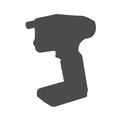How to Tell What Drinks are Fit for No and Low Cocktails
There are plenty of reasons to reduce or even altogether quit your alcohol consumption, but raising money for MacMillan Cancer Support is a very noble one. Thousands of people have already signed up for the month-long sobriety experiment Go Sober in October. And lucky for them, and maybe you, the bar community has caught up with the consumer desire for better no or low alcohol alternatives to the usual mega-boozy cocktails. So you can now go and join your friends at a drinking establishment and take part in the fun without feeling left out.
In days of yore, non-alcoholic drinks contained heaps of sugar. Mocktails like the Shirley Temple, a blend of ginger ale, grenadine syrup and fresh lemon, were the only nod to the designated driver on a list of far more complex alcoholic drinks. Even the name, given after the famous child actor, conjures images of a sickly sweet musical theatre style girlhood. Hardly a well-rounded option for a sophisticated adult palate. It was either that though, or a virgin version of an alcoholic drink. Not balanced as a drink within its own right.
Then along came the likes of Seedlip, Mother Root and Everleaf, and suddenly there was a market for spirit alternatives. Sales are now on an upward trend. The non-alcoholic drink market is predicted to grow nearly 10% year on year in the US, and in the UK, forecasters have suggested growth of 34% by 2024. By 2026, 36% of spending and 11% of volume consumption in the Non- Alcoholic Drinks market will be attributable to out-of-home consumption (e.g., in bars and restaurants). That's huge.
So let's look at the drinks bartenders and bars are offering as their no and low options, so we can make better choices when we order or even attempt to make them at home.

Alcohol Substitutes
Non-alcoholic beers have been on the market for a while. But it wasn't until Ben Branson launched Seedlip in 2015 to solve the dilemma of 'what to drink when you're not drinking' that diversity entered the spirits category. The brand borrowed ideas from gin via the distillation of botanicals. Ingredients like peas, hay, spearmint, rosemary and thyme are treated to maceration, copper pot distillation and filtration, just not using alcohol as a base.
While Seedlip is marketed and presented like a gin, meant to be served with tonic, Everleaf is more simply described as an aperitif. Founded by conservation biologist and bar owner Paul Matthews, Everleaf is made using worldwide botanicals 'from land and sea' then process via dehydrating, macerating, and extracting to create a balance of flavours.
Essentially, these brands are more complicated cousins of flavouring agents like rose water or orange flower water. In contrast, Mother Root stems from an old recipe for a switchel, a drink based on fresh-pressed ginger and apple cider. Much like a shrub, kefir or kombucha, the
fermentation from the vinegar is thought to be beneficial for our gut bacteria. Therefore, the Mother Root brand stance is that it's not only a non-alcoholic spirit alternative but a wellbeing drink too.
With a healthy growing consumer desire for them, there is an increasing market full of spirit alternatives that you can mix into cocktails.
Low Alcohol Options
The problem with non-alcoholic drinks is that alcohol acts like sticky velcro to flavouring molecules, and therefore it's easier to get complex nuances with traditional booze. But the answer to this is that alcoholic drinks are often cut with water after added flavouring agents. In gin, for instance, you take very high strength alcohol, soak and distil it with plants, then after all that, cut it to 40% with good quality water.
So, gin producers, like Hayman's, for example, have begun creating concentrated gin offerings. They claim that it makes a G&T with 80% less alcohol and fewer calories, with no compromise on the taste. Hayman's Small Gin comes in a tiny bottle with a free thimble to measure your dose. You add it as you would a concentrated squash to a long, hydrating soda, or use it as an ingredient with other non-alcoholic spirits to create short drinks that are low in ABV but high in taste.
The level of invention and flavour profiles in fortified wines are now so great that the Spritz (made with tonic or flavoured soda, rather than sparkling wine) is now an excellent low alcohol alternative. Dr Adam's Pietro Nicola range comprises Nocino (green walnut liqueur), Pesaro (peach aperitif
wine) and Caffè Margaux (barrel-aged coffee spirit), which are all highly complex, delicious fortified and aromatised options for both digestives and aperitifs.
Cocktail bitters use incredibly high strength alcohol (Angostura Bitters is 44.7% ABV), but they're meant to be used in tiny drops and dashes, so they add a lot of flavour without adding much by way of volume or alcohol to a drink.
However, it's worth noting that these drinks are LOW alcohol, not alcohol-free. Any household products we ingest are legally allowed to be labelled as 'non-alcoholic' if they have up to .5 per cent alcohol in them. So, don't combine two or more low alcohol beverages in one drink. Use a single dash of bitters for every 75ml of non-alcoholic liquid, like tonic or soda, and you're technically in the non-alcoholic territory, but steer clear if you want no alcohol at all to pass your lips.
Soft Drinks
One way to ensure you are safe in choosing to ingest absolutely no alcohol is to stick to soft drinks. Luckily, fuelled partly by the strength of the non-alcoholic drinks market, there are several fancy options out there for when you feel the need for a treat. Luscombe does a Damascene Rose Bubbly based on grape, citrus and rose, an excellent alternative to celebration bubbles.
Punchy Drinks have created a canned punch that steers away from the sweet fruity style that has dominated the market so far. Using flavours like ginger, chai and peach or cucumber and Yuzo, they want to make eco-friendly, sugar-free, non-artificial drinks that appeal to a more discerning drinker.
Mixer brands, which typically target the cocktail market, are also offering great flavours to non- drinkers. The Beebolin range from Scandinavia uses spruce, sea buckthorn and rosehip as just some of their selections. Tonic producers like Fentiman's and Folkington's have a plethora of choices if you usually reach for a G&T after 5pm and need a placebo.
Whatever you chose, you can always make it feel like a celebration by using the Flavour Blaster cocktail bubbles and aromas. None of the Flavour Blaster products contain any alcohol and are completely safe for non-drinkers. For some great cocktail recipes, try Macmillan’s Go Sober website, where the post regular recipe suggestions, or head to cocktail sites like OOFT! and La Maison Wellness, websites run by leading professional bartenders behind the scenes.

















